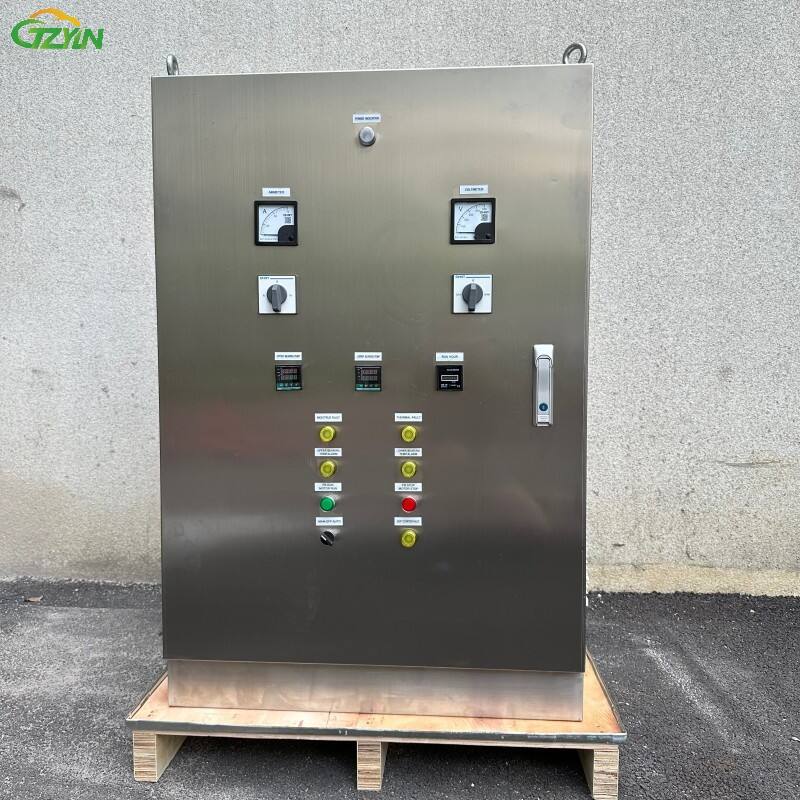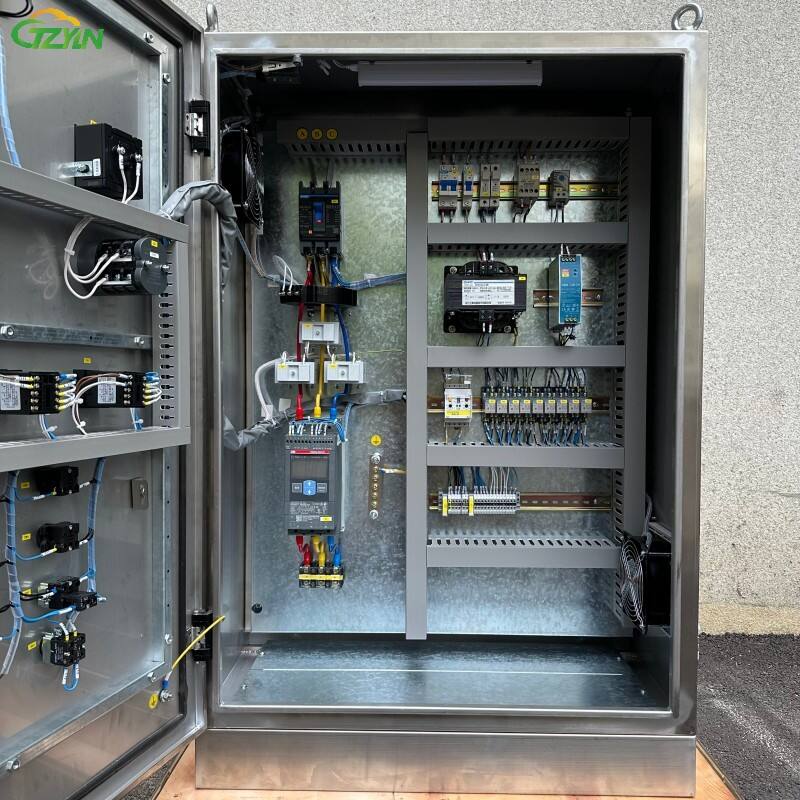Understanding Motor Inrush Current Reduction Through Advanced Control Systems
Industrial motors are the backbone of manufacturing and processing facilities worldwide, but their startup process has long posed significant challenges. When motors initially power up, they can draw up to 8 times their normal operating current, creating potential problems for electrical systems and equipment longevity. A soft start control cabinet represents a revolutionary solution to this persistent challenge, offering a sophisticated approach to motor management that can dramatically reduce inrush current while extending equipment life.
Modern industrial facilities are increasingly turning to soft start control cabinets as their preferred method for motor control, particularly given their ability to reduce motor inrush current by an impressive 70%. This remarkable reduction not only protects valuable equipment but also contributes to significant energy savings and improved operational efficiency.
Core Components of Soft Start Control Systems
Power Electronics and Control Circuits
The heart of a soft start control cabinet lies in its advanced power electronics. These systems utilize thyristors or silicon-controlled rectifiers (SCRs) to gradually ramp up voltage to the motor. Unlike traditional starting methods, these electronic components allow for precise control over the voltage applied during startup, effectively managing the current draw and reducing mechanical stress on the system.
Modern control circuits within the soft start control cabinet continuously monitor various parameters including voltage, current, and motor temperature. This real-time monitoring enables dynamic adjustments to the starting sequence, ensuring optimal performance while maintaining the targeted 70% reduction in inrush current.
Protection and Monitoring Features
Advanced soft start control cabinet designs incorporate multiple layers of protection mechanisms. These include overcurrent protection, phase loss detection, and thermal overload monitoring. Each protective feature works in concert to prevent damage to both the motor and the electrical distribution system, while maintaining the efficiency of the soft start process.
The monitoring capabilities extend beyond basic protection, offering detailed analytics and performance data that facility managers can use to optimize their operations. This level of insight wasn't possible with traditional motor starting methods.

Operating Principles and Functionality
Voltage Ramping Mechanism
The soft start control cabinet implements a sophisticated voltage ramping mechanism that forms the foundation of its inrush current reduction capability. By gradually increasing the voltage applied to the motor over a predetermined time period, the system effectively manages the starting current while ensuring smooth acceleration of the motor to its operating speed.
This controlled ramp-up process typically spans several seconds, during which the soft start control cabinet continuously adjusts the firing angle of its thyristors. This precise control ensures that the motor receives exactly the power it needs at each moment of the starting sequence, eliminating the harmful current spikes associated with direct-on-line starting.
Torque Control and Management
Alongside voltage regulation, the soft start control cabinet actively manages motor torque during startup. This dual control approach ensures that the motor develops sufficient torque to overcome initial load requirements while maintaining the reduced current draw. The system's sophisticated algorithms continuously optimize the balance between torque output and current consumption.
By maintaining precise control over both voltage and torque, the soft start control cabinet achieves its remarkable 70% reduction in inrush current without compromising the motor's ability to handle its intended load. This balance is crucial for applications where smooth startup is essential, such as conveyor systems or pumping stations.
Energy Efficiency and Cost Benefits
Reduced Power Consumption
The implementation of a soft start control cabinet leads to substantial energy savings through multiple mechanisms. The most immediate benefit comes from the reduced peak power demand during motor startup, which can significantly impact facility power costs, especially in operations with frequent motor starts or multiple motors.
Long-term energy efficiency improvements are realized through the reduced stress on the electrical infrastructure, leading to lower losses in transformers and distribution equipment. These cumulative savings can result in significant reductions in operational costs over time.
Maintenance and Longevity Advantages
The gentle starting characteristics provided by the soft start control cabinet directly translate to reduced mechanical wear on motor components. This decreased stress extends to the entire drive train, including couplings, bearings, and driven equipment. The result is longer equipment life and reduced maintenance requirements.
Facility managers report significant reductions in unplanned downtime and maintenance costs after implementing soft start control cabinet solutions. The predictive maintenance capabilities built into modern systems allow for early detection of potential issues, further enhancing the overall reliability of the motor system.
Implementation and Integration Considerations
Installation Requirements
Successful implementation of a soft start control cabinet requires careful consideration of the installation environment and existing infrastructure. The cabinet must be properly sized for the motor load and installed in a location that provides adequate ventilation and protection from environmental factors.
Integration with existing control systems and safety circuits must be carefully planned to ensure seamless operation. This includes consideration of communication protocols, emergency stop systems, and any required modifications to the facility's electrical distribution system.
Commissioning and Optimization
The commissioning process for a soft start control cabinet involves precise adjustment of starting parameters to achieve optimal performance. This includes setting appropriate ramp times, initial voltage levels, and current limits based on the specific application requirements and motor characteristics.
Ongoing optimization may be necessary as operating conditions change or as the system ages. Modern soft start control cabinets often include self-learning capabilities that can automatically adjust parameters based on actual performance data, ensuring continued optimal operation.
Frequently Asked Questions
What makes soft start control cabinets more effective than traditional starting methods?
Soft start control cabinets utilize advanced power electronics and sophisticated control algorithms to provide gradual motor acceleration, resulting in significantly reduced inrush current and mechanical stress. Unlike traditional methods, they offer precise control over the starting process and include comprehensive protection features.
How long does it take to achieve return on investment with a soft start control cabinet?
ROI typically occurs within 12-24 months, depending on factors such as motor size, starting frequency, and energy costs. The savings come from reduced energy consumption, lower maintenance costs, and extended equipment life.
Can soft start control cabinets be retrofitted to existing motor installations?
Yes, soft start control cabinets can be retrofitted to most existing motor installations. The process requires proper sizing and integration planning, but the benefits of reduced inrush current and improved motor protection make it a worthwhile investment for many facilities.
What maintenance is required for a soft start control cabinet?
Maintenance requirements are minimal, typically including regular inspection of electrical connections, cleaning of cooling systems, and verification of control parameters. Modern systems include self-diagnostic capabilities that help identify potential issues before they become problems.
Table of Contents
- Understanding Motor Inrush Current Reduction Through Advanced Control Systems
- Core Components of Soft Start Control Systems
- Operating Principles and Functionality
- Energy Efficiency and Cost Benefits
- Implementation and Integration Considerations
-
Frequently Asked Questions
- What makes soft start control cabinets more effective than traditional starting methods?
- How long does it take to achieve return on investment with a soft start control cabinet?
- Can soft start control cabinets be retrofitted to existing motor installations?
- What maintenance is required for a soft start control cabinet?


